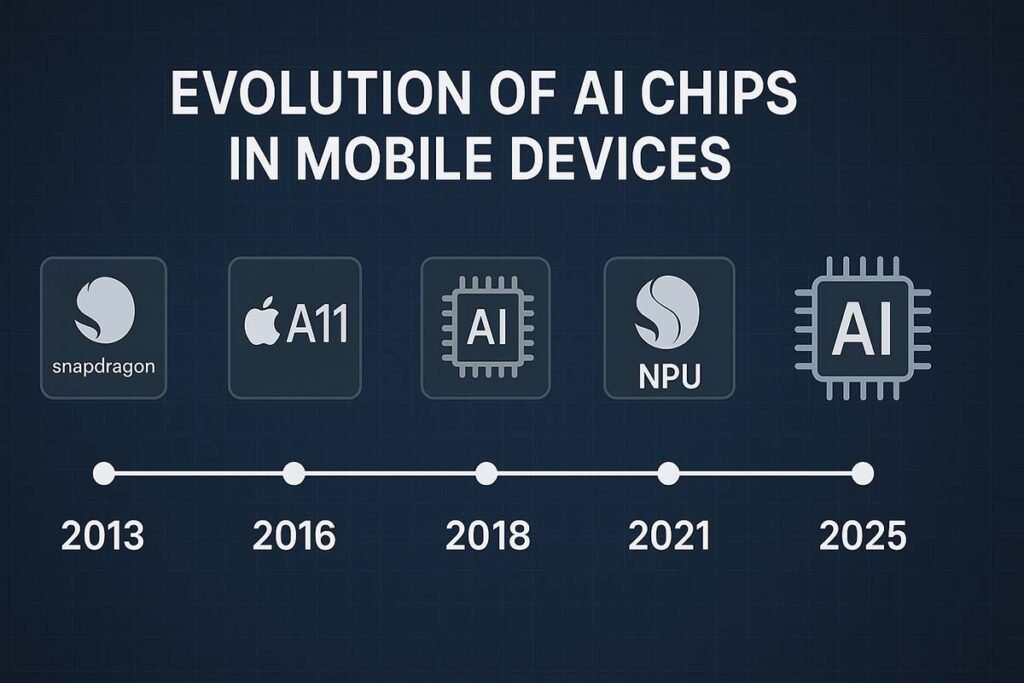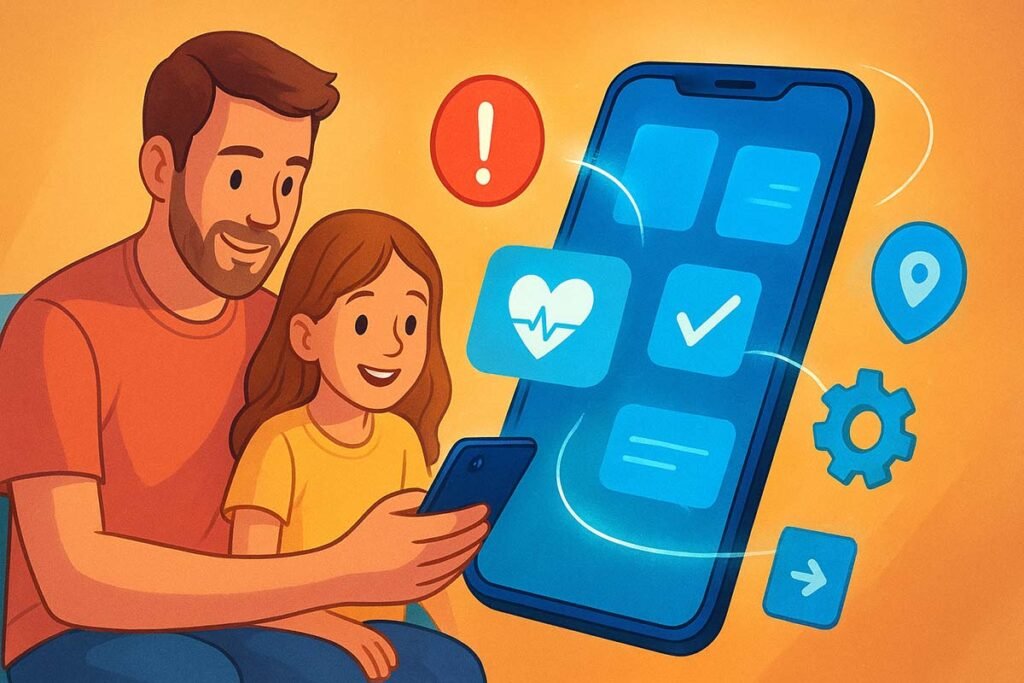Edge AI Revolution: Edge AI is transforming the way smartphones work, offering intelligence right in your hand—without waiting for the cloud. As edge AI explodes in 2025, your device will soon make decisions faster, more securely, and with richer personalization than ever before. This revolution means smart features are about to become smarter—making your daily digital experience seamless and intuitive.
The Challenge and the Shift
The cloud has been the headquarters for artificial intelligence, powering everything from social feeds to voice assistants. Yet, relying on the cloud means latency, privacy risks, and constant connectivity. As demand for instant apps and secure data grows, Edge AI is stepping in—running AI directly on your smartphone, keeping sensitive data local, boosting speed, and opening paths to features that were impossible just a year ago. This new frontier promises to change not just how phones work but how people interact with technology.
The Basics: What is Edge AI?
Defining Edge AI
Edge AI combines artificial intelligence with edge computing. Instead of sending data to remote servers for analysis, it processes information locally—on smartphones, wearables, and other connected devices. This allows real-time decision-making where you need it most: close to the source.
How Edge AI Works on Smartphones
- Sensors gather real-world information (like images or voice).
- AI models analyze the data on-device, without uploading to a server.
- The phone instantly reacts—unlocking, scanning, or running apps in milliseconds.
- Only necessary data is sent to the cloud, saving bandwidth and battery.
Key Technology
Modern phones use specialized AI chips (NPUs and TPUs), compressed deep-learning models, and software frameworks (TensorFlow Lite, Apple CoreML) to run powerful AI tasks inside your pocket.
Edge AI vs Cloud AI: A Head-to-Head Comparison
Key Benefits of Edge AI for Smartphones
Real-Time Intelligence
- Instant facial recognition, voice commands, translations, and AR—no lag.
- Mission-critical decisions (self-driving, security, health) happen now, not after a round trip to the cloud.
Improved Privacy
- Sensitive information (biometrics, health stats) stays on your device.
- Less risk of interception or leaks.
Lower Costs and Connectivity Independence
- No need for persistent, high-speed internet.
- Saves on data plans; performance isn’t disrupted by weak networks or outages.
Battery and Bandwidth Savings
- Processes only what’s required locally.
- Sends summaries to the cloud—reducing uploads, battery drain, and costs.
Personalized User Experiences
- AI adapts to individual habits, environments, and usage patterns—making phones truly “smart” in context.
Real-World Examples and Case Studies
Healthcare Wearables and Smartwatches
- Edge AI in wearables monitors vitals and alerts caregivers instantly without sending raw health data to remote servers.
- Example: Apple Watch uses on-watch AI to detect arrhythmias and fall risks, even when offline.
Smart Surveillance
- Cameras use Edge AI to detect movement, analyze threats, and trigger alarms—all locally—minimizing false positives and privacy risks.
Manufacturing and Retail
- Edge-driven smart shelves and machines flag low stock and spot defects on the assembly line in real-time.
- Example: Industrial devices use built-in AI to spot machine failures before they happen, saving time and reducing costs.
Autonomous Vehicles
- Cars process traffic data with onboard Edge AI rather than sending every image to the cloud; rapid reactions ensure safety.
Smartphones: Everyday Applications
- Google Pixel’s photo-processing works instantly on-device, letting users apply effects, improve images, and even recognize faces—all without lag or data upload.
- Samsung and Apple deploy on-device AI to power speech recognition, auto-translation, and context-sensitive app suggestions.
Expert Quotes and Insights
- “Edge AI is turning smartphones into instant decision-makers. The era of waiting for the cloud is over,” notes Dr. Maya Sanders, an AI hardware researcher.
- “With edge processing, we’re seeing apps—healthcare, finance, security—function smarter and safer, even when offline,” reports Sphere Inc., a leader in industrial Edge AI deployments.
Industry Impact: Edge AI Across Sectors
Healthcare
- Devices detect critical changes in patient health (heart rate, glucose spikes) instantly, alerting medical professionals without delay.
Automotive
- AI-powered sensors in vehicles analyze hazards and traffic signs on the spot, enabling critical safety decisions—sometimes in life-or-death scenarios.
Retail
- Edge AI-infused cameras and shelves track shoppers’ movements, optimize layouts, and help staff serve better—all in real time.
Industrial & Smart Home Devices
- Predictive maintenance, equipment monitoring, and automated systems all move faster and more efficiently with edge intelligence.
Challenges and Trade-Offs
Hardware Limitations
- Device-based AI is bound by chip size and power.
- Model updates require hardware upgrades or over-the-air tweaks.
Scalability
- Cloud AI scales with server capacity; edge AI requires widespread device upgrades for broader rollouts.
Hybrid Solutions
- Combining edge and cloud is emerging—local AI handles real-time decisions, while bigger tasks or learning updates sync with the cloud as needed.

The Road Ahead: Why Your Smartphone Will Outpace Cloud-Based AI
With robust AI chips, refined software, and growing privacy regulations, the next generation of smartphones will outperform cloud-reliant systems for most day-to-day and mission-critical applications. Local intelligence will be the norm, not the exception—making technology both faster and more secure. Expect your phone to make smarter suggestions, anticipate your needs, and keep your data safe—all without the cloud holding things back.
Take Action—Join the Edge AI Revolution
The edge AI revolution means everything you need happens where you are. Whether snapping a photo, monitoring your health, or gaming on the go, the smartest features will run locally. The cloud isn’t gone, but it’s now a supporting player—your phone is about to get even better.
Explore the latest edge AI-powered apps and devices—upgrade to a smartphone that’s truly smarter. The future, quite literally, is in your hands.
FAQs
Q1: What is edge AI and how does it differ from cloud AI?
A: Edge AI processes data directly on devices like smartphones, enabling real-time intelligence, while cloud AI sends data to remote servers for analysis, causing higher latency and greater privacy risks.
Q2: Why will smartphones be smarter than the cloud with edge AI?
A: With edge AI, phones process decisions instantly and maintain privacy by keeping sensitive information local, offering a faster and more personal user experience.
Q3: What are some examples of edge AI in mobile devices?
A: Examples include facial recognition, real-time translation, health monitoring, and instant photo edits, all powered locally by the device’s AI chip.
Q4: What industries benefit most from edge AI?
A: Healthcare, automotive, retail, manufacturing, and smart home sectors all gain faster, more secure, and reliable AI functionalities from on-device processing.
Q5: How does edge AI enhance privacy and security?
A: Edge AI keeps sensitive data on-device, reducing the risk of cyberattacks and leaks that occur when data travels to cloud servers.
Q6: What are the challenges of edge AI compared to cloud AI?
A: Device hardware limits, update deployment complexities, and scaling issues for mass adoption are primary challenges, but hybrid models are emerging as a solution.
Q7: Will edge AI replace cloud AI entirely?
A: Not entirely—cloud AI will still be vital for large-scale analytics, model training, and global services, but daily intelligence is shifting to the device edge.
Q8: How can consumers benefit from edge AI advances?
A: Expect apps to become faster, smarter, and safer—optimizing battery, protecting privacy, and working even with spotty connections.




Pingback: The $524 Million Indian GenAI Boom: Why 2025 is India's AI Startup Year - FirstsPost
Pingback: Reasoning AI Models: When Machines Started Thinking Step-by-Step Like Scientists - FirstsPost